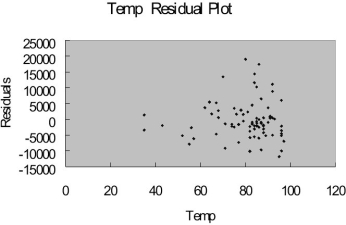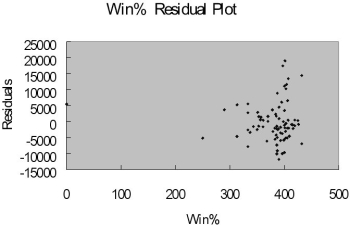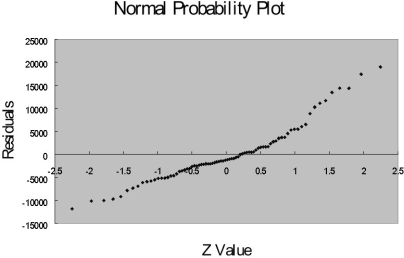TABLE 15-9
Many factors determine the attendance at Major League Baseball games. These factors can include when the game is played, the weather, the opponent, whether or not the team is having a good season, and whether or not a marketing promotion is held. Data from 80 games of the Kansas City Royals for the following variables are collected.
ATTENDANCE = Paid attendance for the game
TEMP = High temperature for the day
WIN% = Team's winning percentage at the time of the game
OPWIN% = Opponent team's winning percentage at the time of the game WEEKEND - 1 if game played on Friday, Saturday or Sunday; 0 otherwise PROMOTION - 1 = if a promotion was held; 0 = if no promotion was held
The regression results using attendance as the dependent variable and the remaining five variables as the independent variables are presented below.




The coefficient of multiple determination ( R 2 j) of each of the 5 predictors with all the other remaining predictors are, respectively, 0.2675, 0.3101, 0.1038, 0.7325, and 0.7308.
-Referring to Table 15-9, there is enough evidence to conclude that PROMOTION makes a significant contribution to the regression model in the presence of the other independent variables at a 5% level of significance.
Definitions:
Nonprofit Organizations
Entities that operate for charitable, educational, cultural, or social welfare purposes rather than for profit, investing any excess revenue in the organization's mission.
Social Media
Platforms that enable users to create, share content or participate in social networking.
Traditional Marketing
Marketing techniques that utilize traditional channels such as print media, broadcasting, direct mail, and telephone to communicate a marketing message to consumers.
Indirect Competition
Competition between businesses offering different products or services that satisfy the same customer needs or desires.
Q28: Which of the following is not a
Q43: Referring to Table 13-10, construct a 95%
Q54: Referring to Table 14-3, what is the
Q70: Referring to Table 16-3, if this series
Q96: Referring to Table 18-7, an R chart
Q105: Referring to Table 18-6, a p control
Q133: Referring to Table 16-10, the fitted value
Q154: Referring to Table 16-7, the number of
Q174: The method of moving averages is used<br>A)
Q184: Referring to Table 14-14, the predicted demand